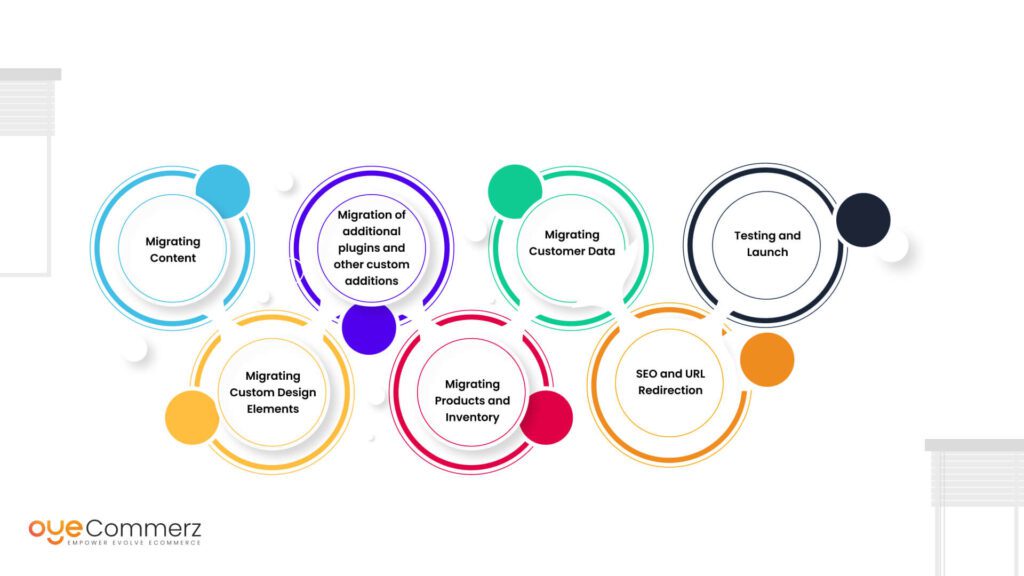In the ever-evolving landscape of online retail, choosing the right platform is vital for your business's success. If you’re currently using WP and planning a migration to an alternative, you’re not the only one. Numerous businesses are shifting to take advantage of Shopify’s powerful features, ease of use, and scalability. This guide will guide you on the journey of migrating from WP to Shopify seamlessly, ensuring that you unlock your online retail potential.
Why Switch from WP to Shopify?
Before exploring the migration journey, it’s important to know why this shift can be helpful for your digital storefront:
Accessible Tools: Shopify provides an user-friendly system that makes easier store operations, making it easier for non-technical users.
Flexibility: As your brand expands, Shopify can accommodate higher visitors and sales without compromising efficiency.
Built-in Tools: Shopify comes with pre-installed features for SEO, analytics, payment management, and much more, reducing the requirement for several plugins.
Enhanced Security: With Shopify, you utilize strong security measures that secure confidential customer data.
Steps for a Effortless Migration
Migrating your eCommerce site from WP to Shopify involves several phases.
Here’s steps to achieve a hassle-free transition:
Plan Your Migration Strategy
Kick-off by mapping out your migration blueprint. Decide on which elements of your present site you want to move, such as:
Inventory information
Customer information
Order history
Blog content
Select the Appropriate Migration Package
Depending on your needs, choose a migration package that aligns with your business. OyeCommerz delivers several options:
Starter Package: Ideal for compact stores with minimal products.
Standard Migration Package: Recommended for mid-range businesses with moderate requirements.
Comprehensive Solution: Excellent for high-volume stores demanding extensive customization.
Save Your Information
Ahead of starting the migration, make sure that you have a comprehensive backup of your WP site. This step is essential in situations where anything goes wrong during the migration.
Extract Your Data from WP
Utilize plugins or custom scripts to transfer key data from your WordPress site:
Inventory
Customers
Orders
Articles
Migrate Data into Shopify
Once you have your content extracted, use Shopify’s import tools or external apps to transfer your information into your new store. Verify that all information is accurately formatted and arranged.
Personalize Your Shopify Platform
Once importing information, adjust your Shopify store’s layout Shopify migration timeline to match with your style. Consider hiring a developer if you require complex customization.
Configure Payment Gateways and Logistics
Arrange billing solutions and shipping settings in Shopify to create a user-friendly transaction experience for customers.
Apply SEO Best Practices
To maintain your SEO performance during the migration:
Implement 301 link updates from existing URLs to migrated ones.
Revise metadata.
Adjust visual content and copy for SEO.
Test Your New Store
Before going live, thoroughly test your new store. Check for any broken links, payment processing issues, or missing data.
Launch Your Store
After everything is in ready, it’s the opportunity to publish! Inform the change to your clients and motivate them to experience the updated capabilities of your Shopify store.
Post-Migration Support
Even after launching your Shopify store, regular assistance is important. Consider engaging service providers who can assist with:
Troubleshooting
Promotional campaigns
Improvement strategies
Conclusion
Migrating from WordPress to Shopify can be a transformative step for your eCommerce. By adopting this guide and working with experts like those offered by dedicated providers, you can ensure a smooth transition that improves your Shopify content optimization business potential. Accept the change and realize the advantages of Shopify today!
